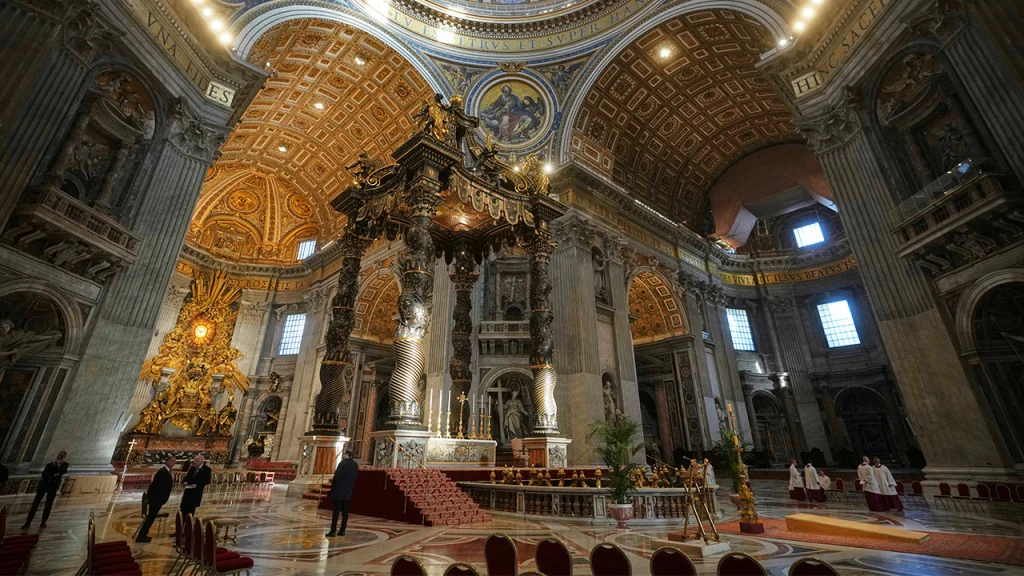Disturbing Incident at St. Peter’s Basilica Highlights Security Concerns
In a deeply troubling incident that shocked visitors and Vatican officials alike, a man reportedly urinated on the Altar of the Confession at St. Peter’s Basilica last Friday. As shocked onlookers watched, security staff and plainclothes police officers quickly intervened, escorting the individual from the sacred site. The disturbing scene, which unfolded in front of a large crowd of pilgrims and tourists, was captured on video and has since circulated widely online, further amplifying the gravity of the desecration. According to Vatican spokesman Matteo Bruni, the incident involved “a person with a serious mental disability” who was detained by Vatican Police before being transferred to Italian authorities for appropriate action. Though Pope Leo was reportedly informed and “shocked” by the news, no immediate formal statement was issued by Vatican leadership addressing the incident.
This distressing event is unfortunately not isolated, but rather part of a concerning pattern of disturbances that have occurred at one of Christianity’s most sacred sites in recent years. Just months earlier, in February, another individual damaged ceremonial items on the same altar. And in 2023, a Polish man staged a protest by undressing and climbing onto the altar with “Save children of Ukraine” written on his back. In that instance, Vatican security reported that the man cooperated with authorities who escorted him to the police station, where he was eventually handed over to Italian police and issued an expulsion order. These repeated incidents raise questions about the balance between maintaining St. Peter’s Basilica as an accessible place of worship and ensuring appropriate security measures protect its sanctity.
The spiritual impact of such desecrations extends far beyond the physical act itself, touching the hearts of the faithful worldwide who view St. Peter’s Basilica as a cornerstone of their religious heritage. Under Canon Law (specifically Canon 1211), acts like these that cause scandal to the faithful are considered serious violations of a sacred site’s holiness. When such violations occur, Catholic tradition requires that public worship be suspended until a formal penitential rite can be performed to restore the sanctity of the church. These restorative ceremonies – typically a Mass or Liturgy of the Word – should be conducted as soon as possible following the desecration. After the 2023 incident, the Vatican did indeed hold such a penitential rite, recognizing the spiritual wound inflicted not just on the physical space but on the broader community of believers.
These incidents unfold against a backdrop of increasing challenges for religious institutions worldwide that seek to remain open and welcoming while also protecting their sacred spaces. St. Peter’s Basilica, as one of Christianity’s most visited and revered sites, faces particular challenges in this regard. The basilica welcomes thousands of visitors daily—faithful pilgrims and curious tourists alike—making comprehensive security a complex undertaking. Each disturbance forces Vatican officials to reevaluate their approach to security, weighing the Catholic Church’s mission of openness against the practical need to prevent desecrations. The incidents also highlight the delicate position of security personnel who must respond swiftly and appropriately to disturbing behavior while maintaining the dignity expected in a sacred space.
The broader context of these incidents includes growing concerns about the protection of religious sites globally. Houses of worship of all faiths have increasingly become targets for various forms of desecration, vandalism, and even violence. While the St. Peter’s incidents appear to involve individuals with personal issues rather than organized attacks, they nonetheless contribute to a climate where religious communities feel increasingly vulnerable. Vatican security forces must navigate this complex landscape while maintaining the basilica’s character as a place of prayer, reflection, and worship. This balancing act becomes particularly challenging when dealing with individuals who may be experiencing mental health crises, requiring responses that are both compassionate and decisive.
For the millions of Catholics worldwide and others who cherish St. Peter’s Basilica as a symbol of religious heritage, these incidents are deeply painful. They represent not just physical violations of a sacred space but spiritual wounds that require healing. The practice of conducting penitential rites after such events reflects the Catholic understanding that desecrations affect the entire community of faith, not just the physical building. As Vatican officials address these security challenges, they also face the pastoral responsibility of helping the faithful process their distress and reaffirm the sanctity of these cherished spaces. While practical security measures are essential, equally important is the spiritual work of restoration and healing that follows such troubling events, ensuring that St. Peter’s Basilica remains what it has been for centuries: a place where people from around the world can connect with the divine in an atmosphere of reverence and peace.


